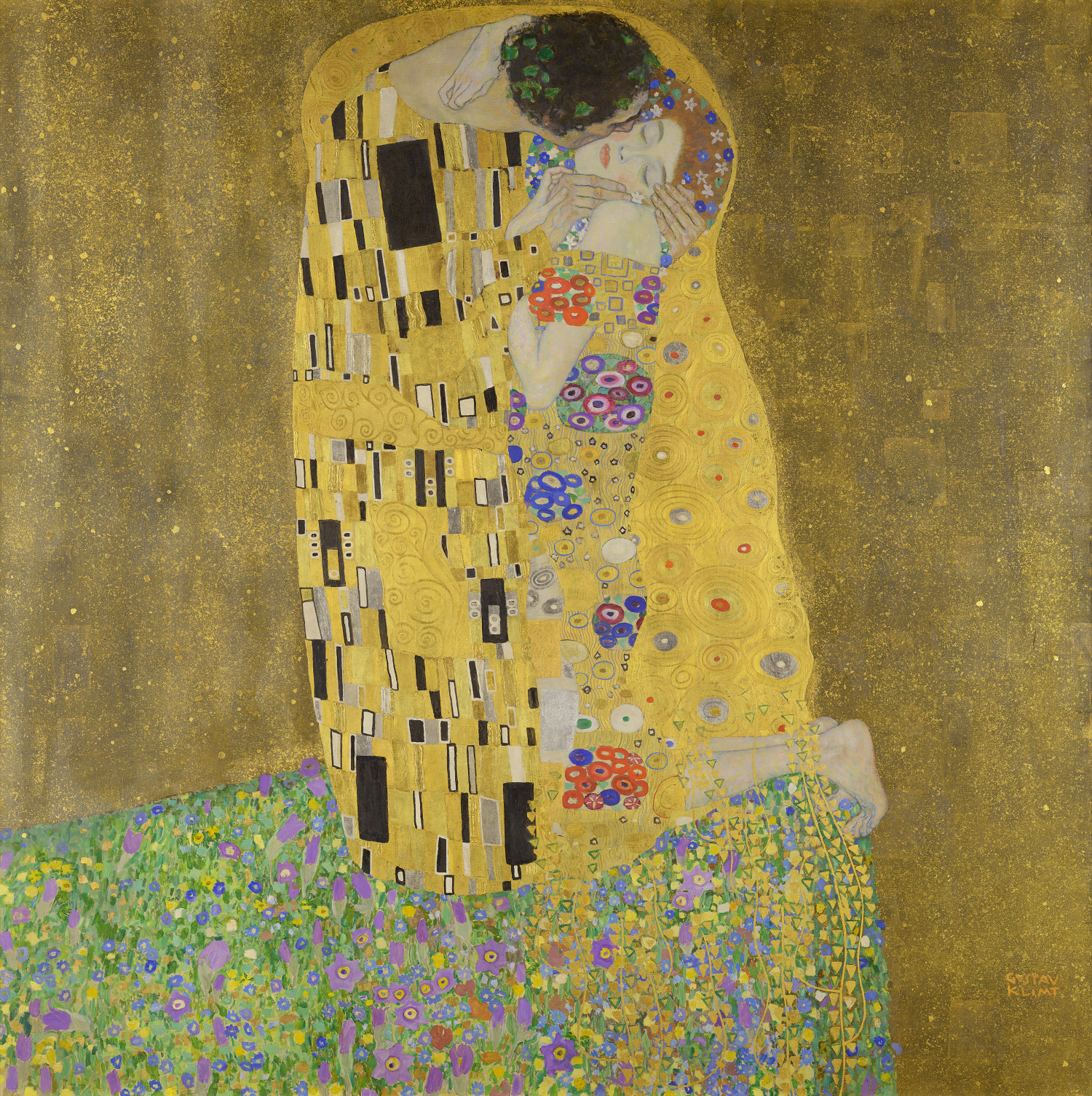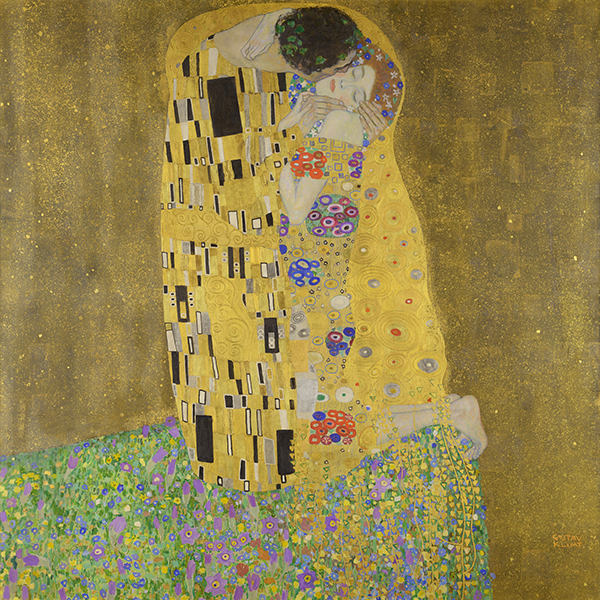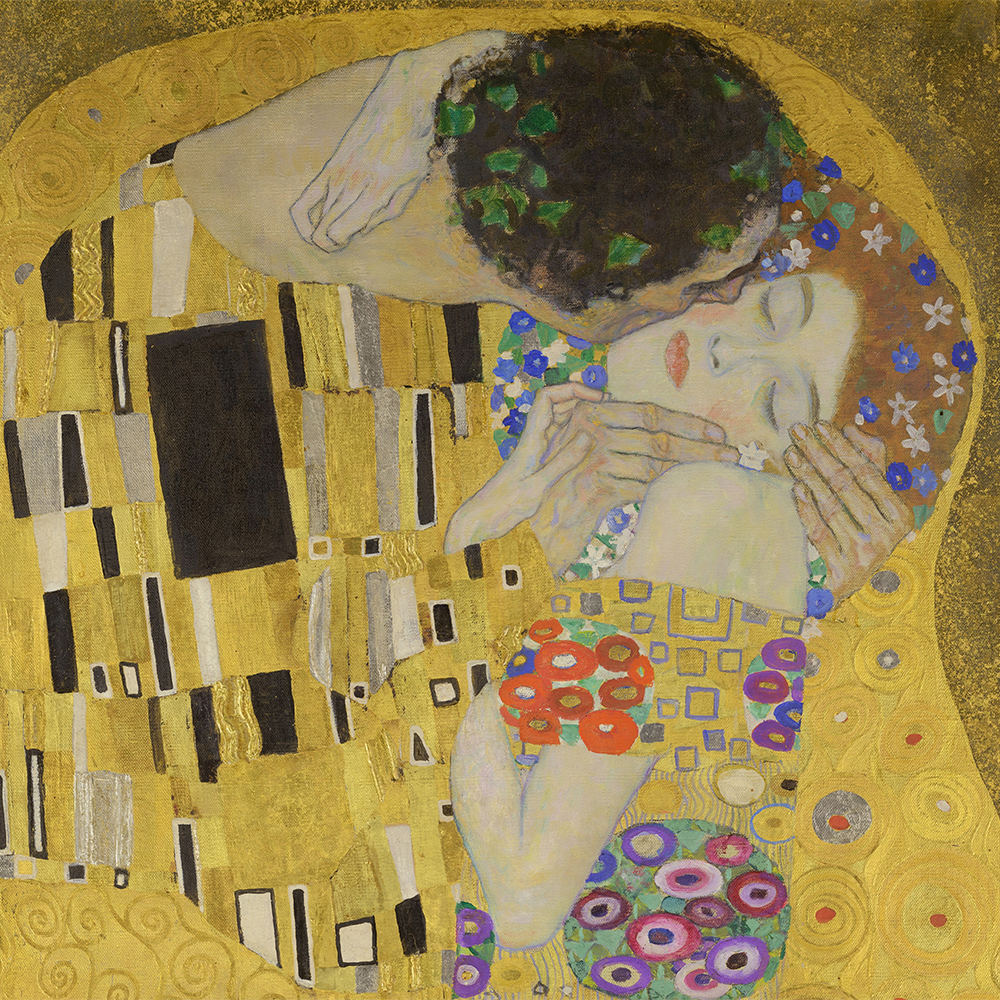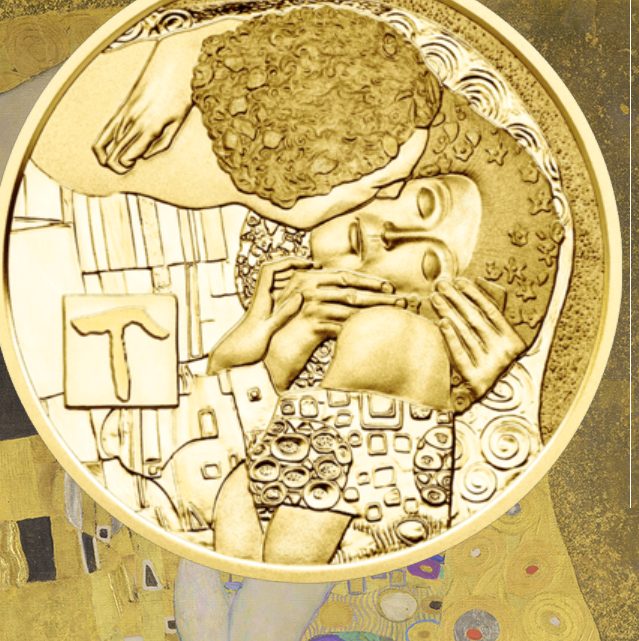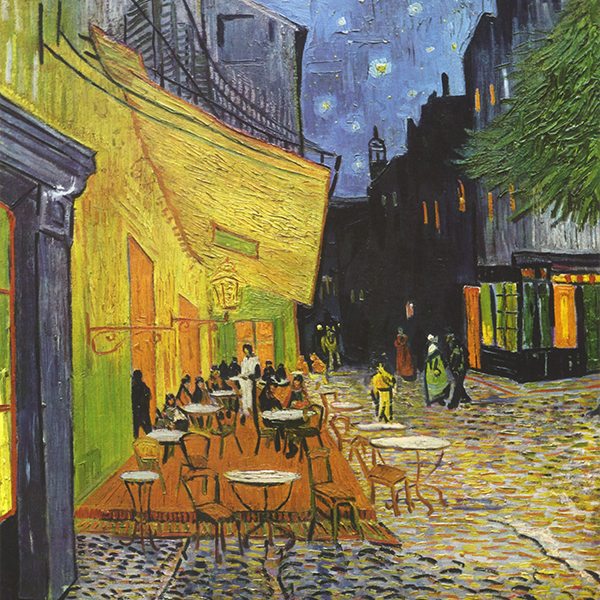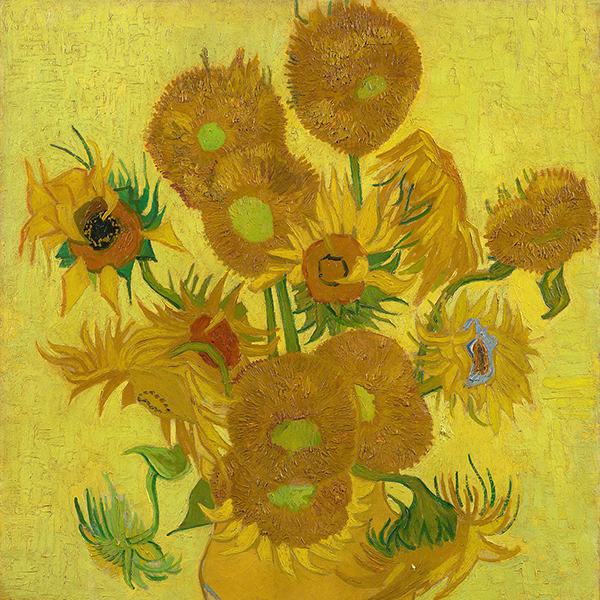The Kiss (Der Kuss)
Gustav Klimt, 1907-8
Painted by Gustav Klimt at the high of his Craft during his ‘golden period’, The Kiss (originally Der Kuss) is among the world’s best loved paintings and among its most iconic images.
The Kiss Composition
It depicts a couple situated at the edge of a flowered escarpment in various shades of gold and symbols, while sharing a kiss against a bronze background. The man is wearing neutral colored rectangles and a crown of vines; the woman wears brightly colored tangent circles and flowers in her hair. The couple’s embrace is enveloped by a veil of concentric circles. Similarly juxtaposed couples appear in both Klimt’s Beethoven Frieze and Stoclet Frieze.
The space surrounding the couple in the painting dissolves into shimmering, extravagant flat patterning. This patterning has clear ties to Art Nouveau and to the Arts and Crafts movement and also evokes the conflict between two- and three-dimensionality intrinsic to the work of Degas and other modernists. Paintings such as The Kiss were visual manifestations of fin-de-siecle spirit because they capture a decadence conveyed by opulent and sensuous images.
The Kiss is a discreet expression of Klimt’s emphasis on eroticism and the liberation therein. The Kiss falls in line with Klimt’s exploration of fulfillment and the redeeming, transformative power of love and art. The Kiss deviates from Klimt’s frequent portrayal of woman as the lascivious femme fatale.
The Kiss represents the culmination of Klimt’s “golden period”; it became the emblem of the Secession. It is a clear symbol of the reconciliation and union of the man and woman. Klimt’s Kiss has been compared, with a certain irony, to the Mona Lisa, both pictures owing some of their fascination to a complexity of meaning. Many see a new development in Klimt’s ability to paint the union of the sexes can also be seen in this work, whereas he had previously above all painted the battle between them. Some observers, however, observe no change in Klimt’s attitude, and regard The Kiss as in a more subtle way describing the exact impossibility of fulfillment arising from the tensions between the sexes.
The Kiss
So what about the contrasting elements of ornamentation based on squares for the man and circles for the woman. Do these complement each another, or is there antagonism between them? Do the two figures not stay at a certain distance from each another, despite their embrace, and could this in fact indicate the lack of an actual relationship between the two of them? What is clear is that the man dominates the situation and takes the initiative for the kiss. While the woman offers no resistance, her hands are tense and her toes grip the rock; in anger or voluptuous pleasure? Klimt knows the ambivalence of the relationship between the perennial figures of Adam and Eve: he modeled himself for his Adam, while holding his beloved, Emilie Flöge, in his arms.
The Kiss represents the culmination of Klimt’s “golden period”; it became the emblem of the Secession. It is a clear symbol of the reconciliation and union of the man and woman. Klimt’s Kiss has been compared, with a certain irony, to the Mona Lisa, both pictures owing some of their fascination to a complexity of meaning. Many see a new development in Klimt’s ability to paint the union of the sexes can also be seen in this work, whereas he had previously above all painted the battle between them. Some observers, however, observe no change in Klimt’s attitude, and regard The Kiss as in a more subtle way describing the exact impossibility of fulfillment arising from the tensions between the sexes.
“no area of human life is so insignificant or trivial that it cannot offer scope for artistic endeavor.., the humblest thing, executed to perfection, serves to increase the beauty of this earth, and progress in culture can be grounded only in the ever more progressive permeation of the whole of life with artistic purpose“
Gustav Klimt and “The Kiss” were selected as the main motif for a collectors’ coin, the 100 euro gold coin issued on 5 November 2003. The obverse depicts Klimt in his studio with two unfinished masterpieces on easels, while the reverse shows The Kiss.
The Kiss is currently at display at the Österreichische Galerie Belvedere museum, which is housed in the Belvedere palace, in Vienna, Austria.

